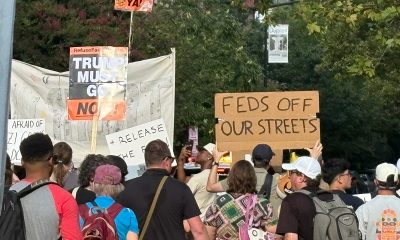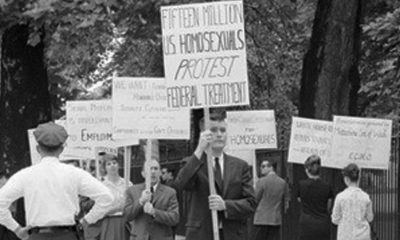Real Estate
Inside a short-term luxury living arrangement
Ampeer Residences offers 92 furnished units in Dupont
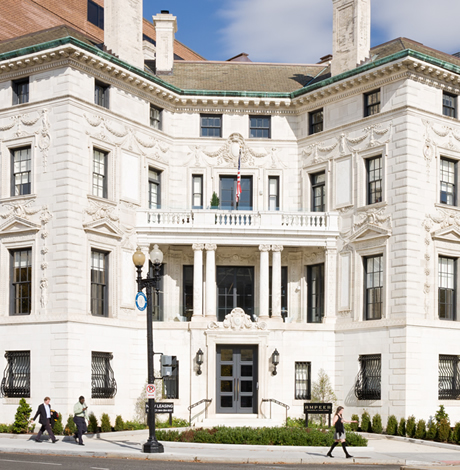
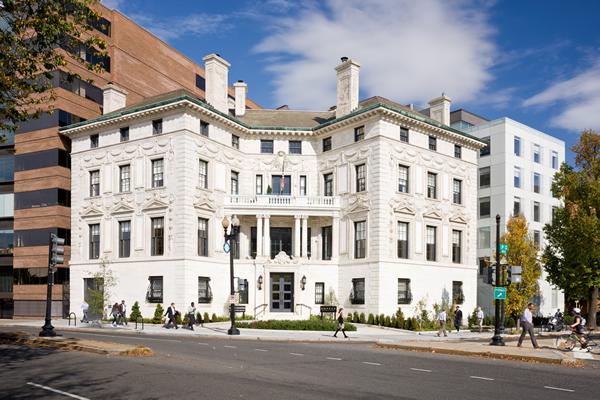
Ampeer Residences offers complimentary breakfast and happy hours, among other amenities. (Photo courtesy Ampeer)
Nontraditional residential developments are increasingly becoming popular choices for renters in the Greater Washington D.C. metro area. Modern short-term living arrangements provide a unique option for residents by incorporating five-star amenities, like fully furnished units, onsite housekeeping, and complimentary food and drinks, paired with a high-end apartment lifestyle of flexible lease terms and included utilities.
Intrigued? Look no further than Dupont Circle for an option in the newly redeveloped building, Ampeer Dupont Circle. Ampeer accommodates 92 fully furnished studio and one-bedroom units with lease terms ranging from 1 to 12 months, designed for the highly mobile professional. The property began leasing in July of 2017 and is nearly at full capacity for the summer.
So, why are these living arrangements becoming increasingly popular? Here are just a few reasons people are turning to short-term, flexible accommodations:
Increase in Remote Working
The career landscape has changed drastically over the last several years with employers offering more remote work opportunities. According to a Gallup survey, 43 percent of employed Americans spent time working remotely in 2016, which represented a four percent increase since 2012. This direct effect is continuing to create a demand for short-term leasing and flexible accommodations where employees can work from one destination to the next. Move-in ready apartments are especially appealing, allowing professionals working long hours to focus on projects versus juggling calls and appointments with cable and internet vendors.
In D.C., especially, the target for this option is certainly the diplomatic community, employees within the State Department, the Department of Treasury, other executive branches, as well as people that are transient.
The work lifestyle of the younger demographic is also a major factor to its popularity. Millennials and the Gen Y workforce are all-in on the mobile trend and do not find rigid and strict leases appealing.
Hospitable Amenities
Staying in a hotel for several months can get expensive quickly, and a room arranged through Airbnb certainly doesn’t accommodate turndown services. There is also something to be said about staying somewhere that feels like your own. So, it’s no surprise that a short-term apartment can be the ideal choice.
Ampeer, for example, offers a suite of perks to their residents including complimentary breakfast and happy hours, secured internet and utilities, and optional laundry and housekeeping services. The neoclassical-style manor also provides several common areas including a restored ballroom, a kitchen/dining room, a fitness center, a library, and a courtyard.
And the units? They are all appointed with 300 thread-count bedsheets, Egyptian cotton towels, and Keurig coffee makers.
Immerse in Local Culture and Activities
Just like any hotel concierge service, a short-term apartment also offers activities and arranges exclusive opportunities that allow residents to enjoy the city’s culture in one way or another.
Ampeer Residences has an extra historical flair than most since the building was originally called The Patterson Mansion — named after socialite Eleanor “Cissy” Patterson’s family — and was constructed in the early 20th century. For the recent renovation, the developers hired renowned D.C. designer, Darryl Carter, to re-imagine the common areas where regular resident activities are being held all summer long, including live musical performances, wine tastings, and cultural speaking events.
Ampeer also snagged the most coveted tickets in town to hold a contest to attend Hamilton: An American Musical at The John F. Kennedy Center for the Performing Arts, as well as a free two-night stay at the residences (the contest is still live on their social media channels if you’re interested in entering).
With all that the short-term apartment lifestyle offers, it is understandable why these accommodations are trending. If you’re interested in checking out this option, many buildings offer personal tours or allow potential residents to attend upcoming events to experience what life is like for their residents.
Ampeer Residences is a short-term, fully furnished luxury residence built around a legacy of style and simplicity combined with activated luxury living space. Residents can choose from appointed studios and one bedrooms in either the grand mansion or modern new tower. Rent includes utilities, cable and internet, food and drink offerings — group breakfasts, happy hours — and other social programs. The mansion’s common areas include a cocktail bar in the original ballroom, a study and library, and a shared kitchen. These areas are also intended to host social gatherings and events for members. For more information about Ampeer, please visit AmpeerResidences.com.
Real Estate
Tips for LGBTQ buyers, sellers during holidays
A powerful and overlooked window for real estate transactions

The holiday season is a magical time, filled with celebration, travel, connection, and reflection. It also happens to be a powerful — and often overlooked — window for both buying and selling real estate. For members of the LGBTQ+ community, shopping for a new home or preparing to list a property during the holidays comes with opportunities, challenges, and important considerations that deserve thoughtful attention.
Whether you’re preparing to make a move as a same-sex couple, searching for safe and affirming neighborhoods, or hoping to secure the best possible price for your home sale before the new year, the holidays can offer unique advantages. With an inclusive approach, LGBTQ+ friendly resources, and the right professional guidance, this season can be a strategic and rewarding time to take your next real estate step.
Below are actionable tips, insights, and resources specifically tailored to LGBTQ+ home buyers and sellers navigating the holiday season.
Why the Holidays Can Be the Right Time
Lower Competition & Motivated Sellers
Because so many people put their real estate plans on pause during November and December, LGBTQ+ home buyers may see lower competition, fewer bidding wars, and sellers who are eager to close before January. This can bring real advantages for first-time gay home buyers or same-sex couples seeking more favorable negotiating terms.
Buyers Are More Serious
If you’re selling your home as an LGBTQ+ individual, remember: holiday buyers tend to be more intentional, financially prepared, and timeline-driven. This can make the sale process smoother.
Holiday Appeal Helps Homes Show Better
Warm lighting, seasonal décor, and neighborhood festivities can enhance curb appeal and emotional impact — which can be especially valuable when selling your home.
Tip #1: Choose LGBTQ-Friendly Representation
Above all else: work with a professional who understands the LGBTQ+ community and the unique concerns LGBTQ+ clients have.
This means choosing:
- a gay realtor
- a lesbian realtor
- an LGBTQ+ friendly real estate agent
Agents who are part of, or deeply familiar with, the LGBTQ+ community can make a tremendous difference in safety, comfort, and confidence throughout the transaction.
For more than 30 years, GayRealEstate.com has been the trusted leader in LGBTQ+ real estate, providing LGBTQ+ home buyers and sellers access to:
- verified LGBTQ+ real estate agents
- same-sex couple home buying experts
- LGBTQ+ friendly realtors near you
- agents experienced in discrimination-related protections
- LGBTQ+ relocation specialists
Whether you’re buying or selling, this starts you on the right path.
Tip #2: Focus on LGBTQ-Friendly Neighborhoods
If you’re buying a home during the holidays, make researching neighborhoods a top priority.
Look for areas known for:
- Inclusion & diversity
- Active local LGBTQ+ groups
- Gay-friendly businesses
- Visible LGBTQ+ community presence
- Supportive schools & services
- Pride events & alliances
Searching online helps — but talking with an LGBTQ+ friendly realtor who knows these neighborhoods firsthand is invaluable.
Also search:
- LGBTQ+ crime statistics
- local anti-discrimination policies
- protections against housing discrimination
- hate crime data
- political climate
- HOA regulations
Your home should feel safe year-round, not just festive in December.
Tip #3: Know Your Legal Protections
Housing discrimination still exists — and LGBTQ+ home buyers and sellers must remain vigilant.
While federal protections exist through the Fair Housing Act (as interpreted to include sexual orientation and gender identity), not all states provide equal protection.
Know your rights around:
- Mortgage discrimination
- Rental screening discrimination
- Sellers refusing offers from LGBTQ+ buyers
- HOA discrimination
- Harassment after move-in
Your agent should be able to assist — but GayRealEstate.com also offers educational guidance and resources for navigating LGBTQ+ legal protections in real estate
Tip #4: Navigate the Emotional Side
For LGBTQ+ buyers and sellers, the holidays can stir up complex feelings:
- family dynamics
- financial pressure
- expectations around marriage or partnership
- relocation stress
- memories tied to a home
Be patient with yourself.
Buying or selling a home is life-changing — honor the emotional journey as much as the financial one.
Tip #5: Take Advantage of Holiday Cost Savings
Buying?
- Lower interest rates may appear around December
- Contractors often discount home inspections & repairs this time of year
- Movers run holiday promotions
Selling?
- Minor seasonal upgrades help tremendously:
- warm lighting
- new evergreen planters
- festive front door accents
- Be careful not to over-decorate — buyers need to see the space clearly
And yes — holiday cookies help.
Tip #6: If You’re Relocating — Plan Ahead
Many LGBTQ+ buyers relocate during the holidays to:
- be closer to family
- move in with a partner
- begin a new job in the new year
If you’re relocating as an LGBTQ+ couple or family:
- research local LGBTQ+ resources
- connect with local LGBTQ+ organizations
- ask your gay real estate agent about local LGBTQ+ clubs, groups, and services
- evaluate long-term safety for LGBTQ+ families
Plan early — December moves get booked fast.
Tip #7: Use Trusted LGBTQ Real Estate Resources
The most important resource of all:
GayRealEstate.com — the #1 dedicated LGBTQ+ real estate resource for over 30 years.
On GayRealEstate.com, you can find:
- LGBTQ+ friendly real estate agents nationwide
- Verified gay and lesbian Realtors
- LGBTQ+ real estate market information
- Same-sex couple home buying guidance
- LGBTQ+ real estate services
- Gay and lesbian friendly neighborhoods
- Relocation tools
- LGBTQ+ home buyer & seller education
No other site offers this level of specialization, expertise, or community connection.
The holidays are more than just a season of celebration — they’re also a meaningful opportunity for LGBTQ+ home ownership, real estate transitions, and new beginnings. Whether you’re a first-time gay home buyer, a same-sex couple selling a home, or an LGBTQ+ family preparing to relocate, you deserve an experience grounded in respect, inclusion, and safety.
With the right preparation — and the right LGBTQ+ friendly real estate agent — your journey can be rewarding, affirming, and filled with new possibilities for the year ahead.
To find an LGBTQ+ real estate agent who understands your needs, visit GayRealEstate.com, the trusted leader in LGBTQ+ real estate services, resources, and representation for over three decades.
Scott Helms is president and owner of Gayrealestate.com.
Real Estate
In real estate, it’s déjà vu all over again
1970s and ‘80s volatility led to creative financing options
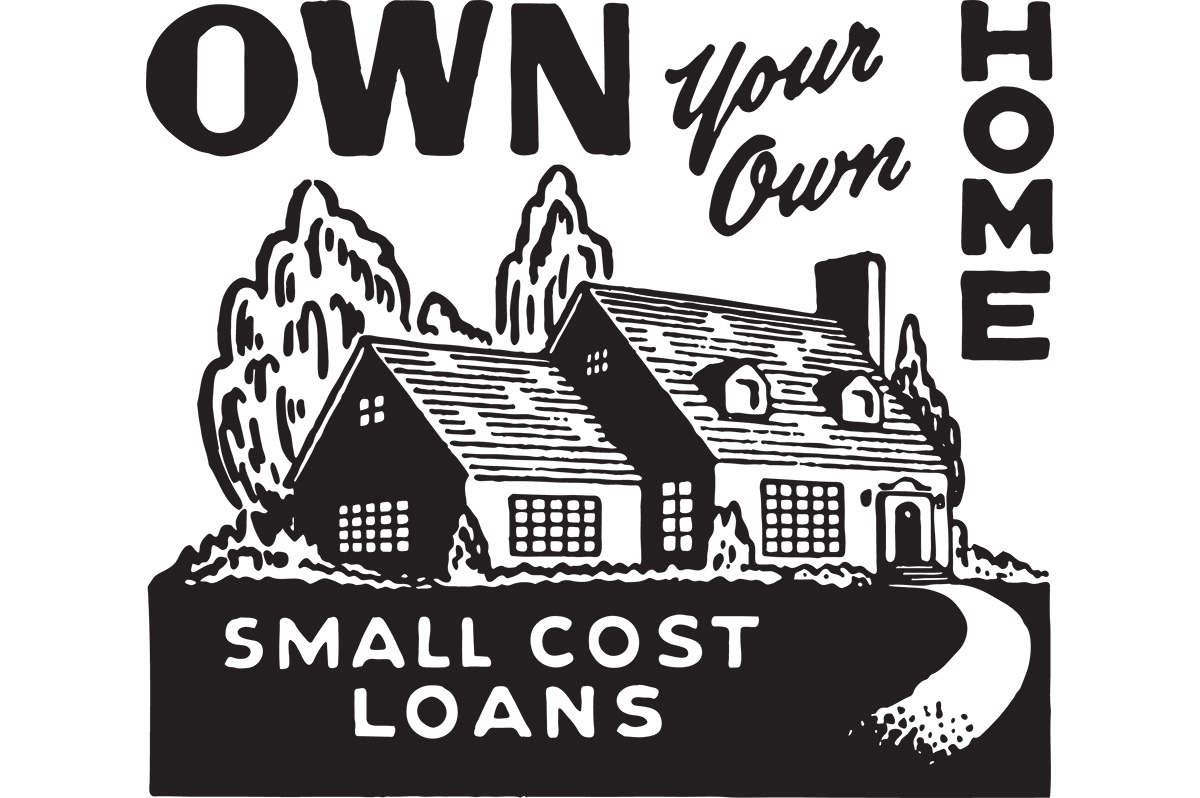
In the 1970s and 1980s, mortgage interest rates climbed into the double digits and peaked above 18%. With rates like that, you needed more than a steady job and a down payment to buy a home — you needed creative financing ideas.
Today’s market challenges may look different, but the response has been surprisingly familiar: unusual financing methods are making a comeback, along with some new ones that didn’t exist decades ago. Here is a brief overview of the most popular tools from that era.
Assumable Mortgages were available with FHA, VA, and USDA loans and, until 1982, even Conventional mortgages. They allowed a buyer to take over the seller’s existing mortgage, including its interest rate, rather than getting a brand-new loan, while compensating the seller for the difference between the assumed loan balance and the contract price.
Often, a seller played a substantial role in a purchase. With Seller Financing (Owner Carry) the seller became the bank, letting the buyer make payments directly to them instead of to a traditional lender.
One variation on Seller Financing was the Land Contract. The seller was still the lender, but the buyer made loan payments to the seller, who then paid his own mortgage and pocketed the difference. The buyer would receive equitable title (the right to use and occupy the property), while the seller kept the title or deed until the contract was paid off or the property sold.
With Wraparound Mortgages, the seller created a new, larger loan for the buyer that “wrapped” around the existing mortgage at an agreed-upon rate. The buyer would then pay the seller, who would continue making mortgage payments on the existing balance, collecting payments and pocketing the spread. Whether title conveyed to the buyer or remained with the seller was negotiated between the parties.
Unlike an assumption, when buying a home Subject To an existing mortgage, the buyer took title to the property and agreed to pay the seller’s mortgage directly to the lender plus any equity to the seller; the mortgage stayed in the seller’s name. Now, most mortgages have a Due on Sale clause that prohibits this kind of transaction without the expressed consent of the lender.
Rent-to-Own was also a popular way to get into a home. While a potential buyer rented a property, the seller would offer an option to purchase for a set amount to be exercised at a later date (lease option) or allow a portion of the rent collected to be considered as a downpayment once accrued (lease purchase).
Graduated Payment Mortgage (GPM) loans were authorized by the banking industry in the mid-1970s and Adjustable Rate Mortgages (ARM) surfaced in the early 1980s. Both featured low initial payments that gradually increased over time.
With the GPM, although lower than market to start, the interest rate was fixed and payment increases were scheduled. A buyer could rely on the payment amount and save accordingly.
ARMs, on the other hand, had interest rates that could change based on the market index, with less predictability and a higher risk of rate shocks, as we saw during the Great Recession from 2007-2009.
While mortgage rates today aren’t anywhere near the extremes of the 1980s, buyers still face a tough environment: higher prices, limited inventory, and stricter lending standards. That combination has pushed people to explore tried and true alternatives and add new ones.
Assumable mortgages and ARMs are on the table again and seller financing is still worth exploring. Just last week, I overheard a colleague asking about a land contract.
Lenders are beginning to use Alternative Credit Evaluation indicators, like rental payment history or bank cash-flow analysis, to assess borrower strength when making mortgage loan decisions.
There are Shared Equity Programs, where companies or nonprofits contribute part of a down payment in exchange for a share of the home’s future appreciation. With Crowdfunding Platforms, investors pool money online to finance real estate purchases or developments.
Another unconventional idea being debated today is the 50-year mortgage, designed to help buyers manage high home prices. Such a mortgage would have a 50-year repayment term, rather than the standard 30 years, lowering monthly payments by stretching them over a longer period.
Supporters argue that a 50-year mortgage could make monthly payments significantly more affordable for first-time buyers who feel priced out of the market. Critics, however, warn that while the monthly payment may be lower, the lifetime interest cost would be much higher.
What ties the past and present together is necessity. As long as affordability remains strained, creative financing – old and new – will continue to shape the way real estate gets bought and sold. As with everything real estate, my question will always be, “What’s next?”
Valerie M. Blake is a licensed Associate Broker in D.C., Maryland, and Virginia with RLAH @properties. Call or text her at 202-246-8602, email her at [email protected] or follow her on Facebook at TheRealst8ofAffairs.
Real Estate
Could lower rates, lagging condo sales lure buyers to the table?
With pandemic behind us, many are making moves
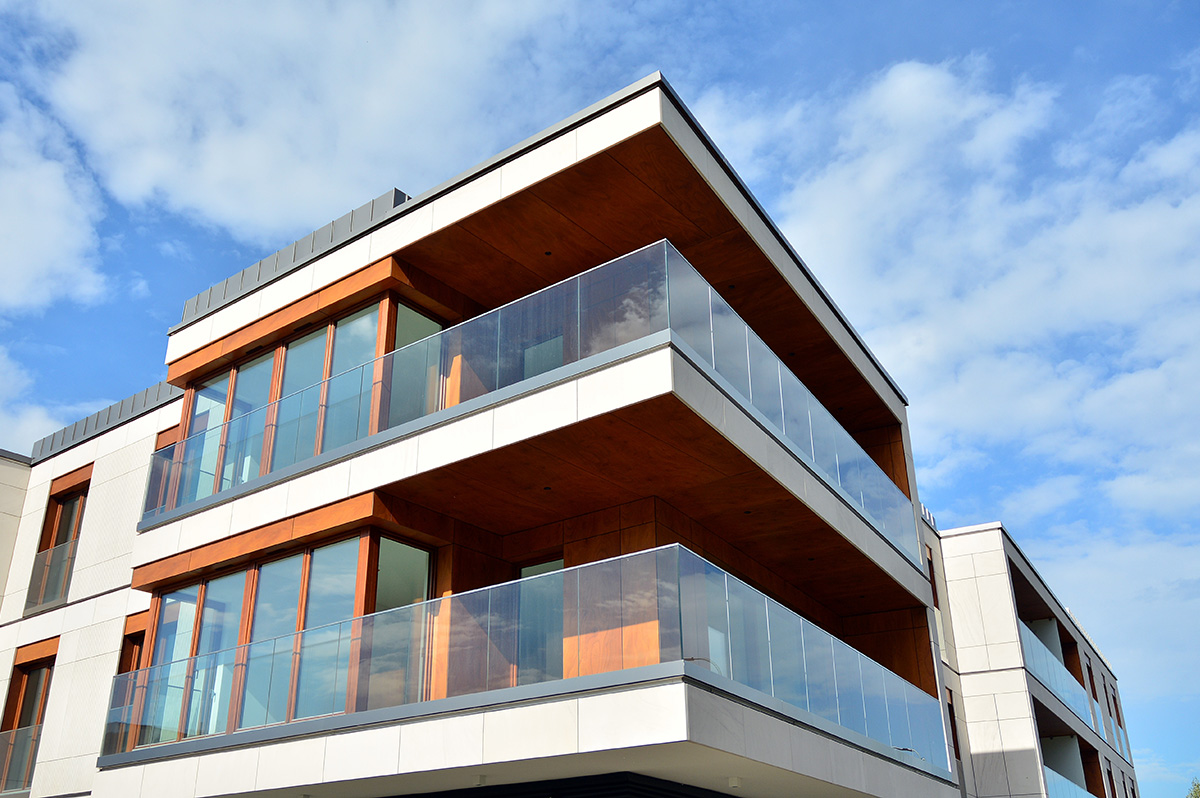
Before the interest rates shot up around 2022, many buyers were making moves due to a sense of confinement, a sudden need to work from home, desire for space of their own, or just a general desire to shake up their lives. In large metro areas like NYC, DC, Boston, Chicago, Miami and other markets where rents could be above $2k-$3k, people did the math and started thinking, “I could take the $30,000 a year I spend in rent and put that in an investment somewhere.”
Then rates went up, people started staying put and decided to nest in the new home where they had just received a near 3% interest rate. For others, the higher rates and inflation meant that dollars were just stretching less than they used to.
Now – it’s been five years since the onset of the pandemic, people who bought four years ago may be feeling the “itch” to move again, and the rates have started dropping down closer to 5% from almost 7% a few years ago.
This could be a good opportunity for first time buyers to get into the market. Rents have not shown much of a downward trend. There may be some condo sellers who are ready to move up into a larger home, or they may be finding that the job they have had for the last several years has “squeezed all the juice out of the fruit” and want to start over in a new city.
Let’s review how renting a home and buying can be very different experiences:
- The monthly payment stays (mostly) the same. P.I.T.I. – Principal, Interest, Taxes and Insurance – those are the four main components of a home payment. The taxes and insurance can change, but not as much or as frequently as a rent payment. These also may depend on where you buy, and how simple or complex a condo building is.
- Condo fees help pay for the amenities in the building, put money in the building’s reserve funds account (an account used for savings for capital improvement projects, maintenance, and upkeep or additions to amenities)
- Condos have restrictions on rental types and usage – AirBnB and may not be an option, and there could be a wait list to rent. Most condo associations and lenders don’t like to see more than 50% of a building rented out to non-owner occupants. Why? Owners tend to take better care of their own building.
- A homeowner needs to keep a short list of available plumbers, electricians, maintenance people, HVAC service providers, painters, etc.
- Condo owners usually attend their condo association meetings or at least read the notices or minutes to keep abreast of planned maintenance in the building, usage of facilities, and rules and regulations.
Moving from renting to homeownership can be well worth the investment of time and energy. After living in a home for five years, a condo owner might decide to sell, and find that when they close out the contract and turn the keys over to the new owner, they have participated in a “forced savings plan” and frequently receive tens of thousands of dollars for their investment that might have otherwise gone into the hands of a landlord.
In addition, condo sellers may offer buyers incentives to purchase their home, if a condo has been sitting on the market for some time. A seller could offer such items as:
- A pre-paid home warranty on the major appliances or systems of the house for the first year or two – that way if something breaks, it might be covered under the warranty.
- Closing cost incentives – some sellers will help a cash strapped buyer with their closing costs. One fun “trick” realtors suggest can be offering above the sales price of the condo, with a credit BACK to the buyer toward their closing costs. *there are caveats to this plan
- Flexible closing dates – some buyers need to wait until a lease is finished.
- A seller may have already had the home “pre-inspected” and leave a copy of the report for the buyer to see, to give them peace of mind that a 3rd party has already looked at the major appliances and systems in the house.
If the idea of perpetual renting is getting old, ask a Realtor or a lender what they can do to help you get into investing your money today. There are lots of ways to invest, but one popular way to do so is to put it where your rent check would normally go. And like any kind of seedling, that investment will grow over time.
Joseph Hudson is a referral agent with Metro Referrals. He can be reached at 703-587-0597 or [email protected].
-

 The White House2 days ago
The White House2 days ago‘Lavender Scare 2.0’: inside the White House’s campaign against LGBTQ federal employees
-

 District of Columbia4 days ago
District of Columbia4 days agoHIV/AIDS activists block intersection near White House
-

 District of Columbia2 days ago
District of Columbia2 days agoActivists praise Mayor Bowser’s impact on city, LGBTQ community
-

 Movies4 days ago
Movies4 days agoHoliday movie season off to a ‘Wicked’ good start

